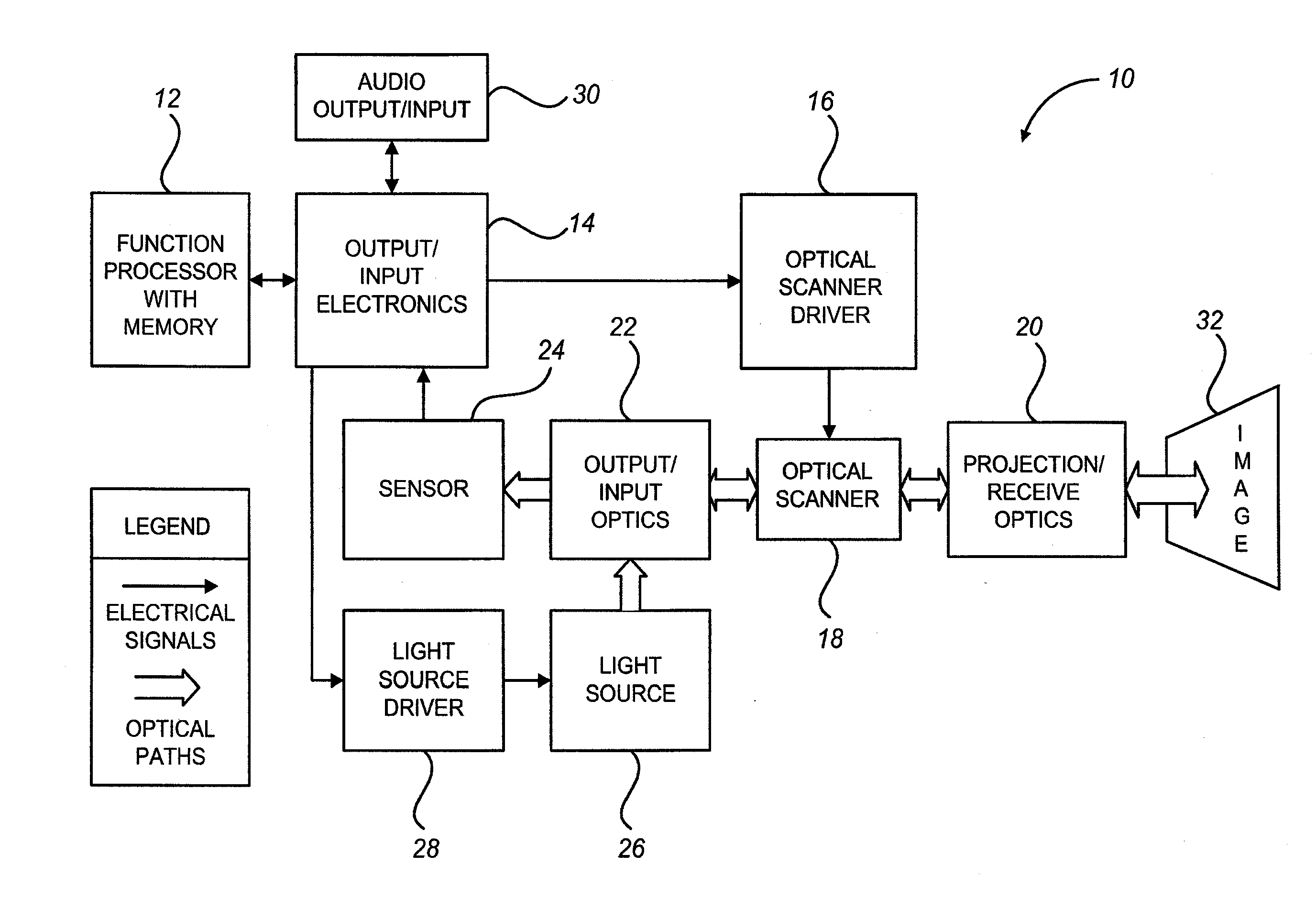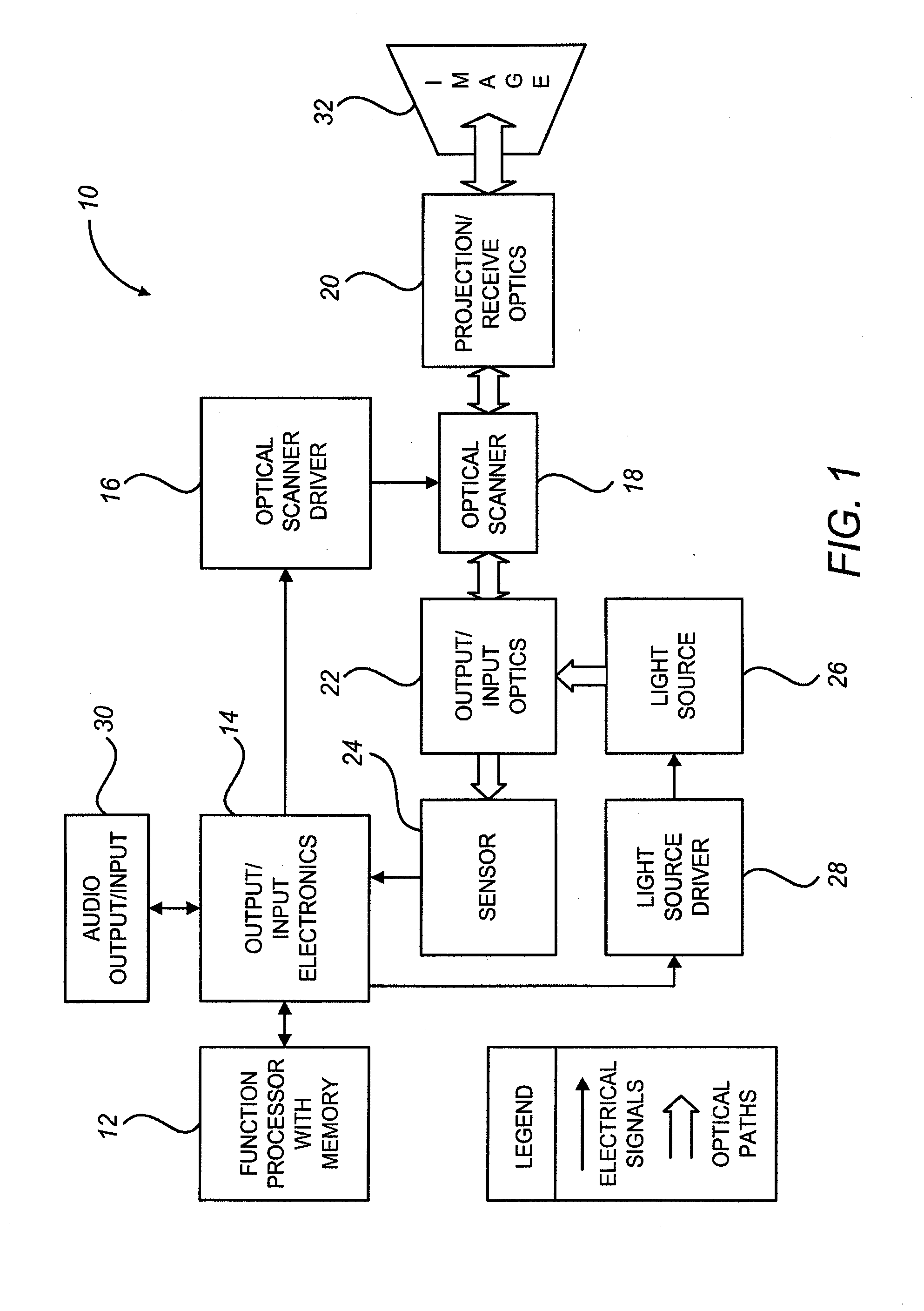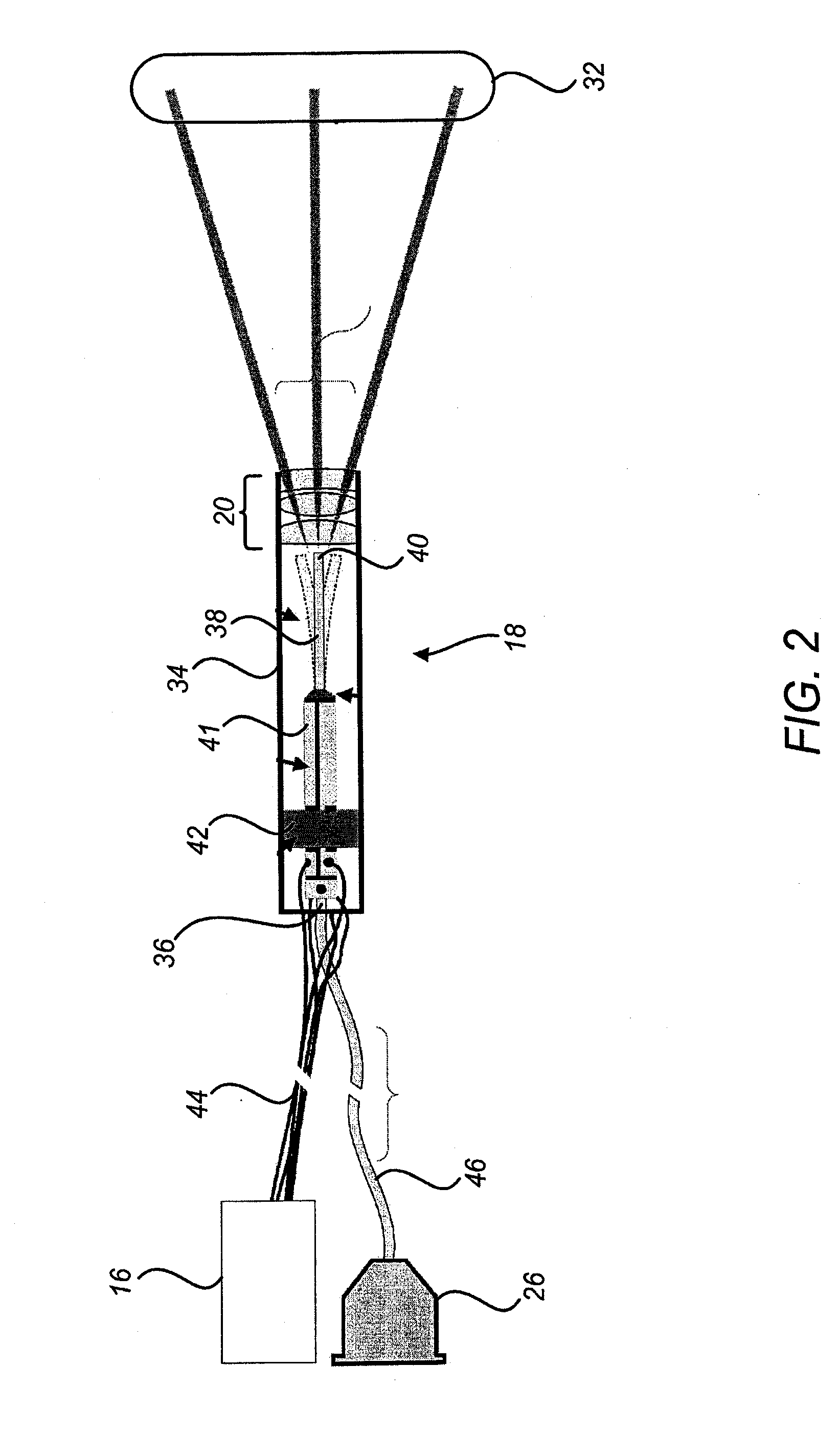Scanning laser projection display devices and methods for projecting one or more images onto a surface with light-scanning optical fiber
a laser projection and optical fiber technology, applied in pulse techniques, instruments, television systems, etc., can solve the problems of affecting the size and cost of the device, affecting the battery capacity of mobile devices, and projectors using lcd panels as imaging elements are reasonably low cost, so as to reduce relative size, weight and cost, and improve functionality.
- Summary
- Abstract
- Description
- Claims
- Application Information
AI Technical Summary
Benefits of technology
Problems solved by technology
Method used
Image
Examples
examples
[0111]Prototype light-scanning engines that use a vibrating optical fiber to scan light in two axes were developed. Rather than reflecting light from a scanning element, the light is deflected directly as it emerges from being transmitted along the optical fiber, enabling a reduction in total scanner size. Initial prototypes were used to develop wearable displays for users with low vision; however, a raster-scanning approach using two orthogonal piezoelectric actuators limited display resolution to 100×39 pixels. Subsequent development focused on using scanning fiber engines to create ultra-thin endoscopes and dramatic improvements to the core fiber-scanning technology have been achieved.
[0112]A proof-of-concept compact monochrome scanned-laser projection display prototype using an improved scanning fiber engine capable of producing 500 line by 500 pixel images with a maximum throw angle of 100° was developed. The scanner is dynamically configurable; the scan angle can be adjusted d...
PUM
 Login to View More
Login to View More Abstract
Description
Claims
Application Information
 Login to View More
Login to View More - R&D
- Intellectual Property
- Life Sciences
- Materials
- Tech Scout
- Unparalleled Data Quality
- Higher Quality Content
- 60% Fewer Hallucinations
Browse by: Latest US Patents, China's latest patents, Technical Efficacy Thesaurus, Application Domain, Technology Topic, Popular Technical Reports.
© 2025 PatSnap. All rights reserved.Legal|Privacy policy|Modern Slavery Act Transparency Statement|Sitemap|About US| Contact US: help@patsnap.com



